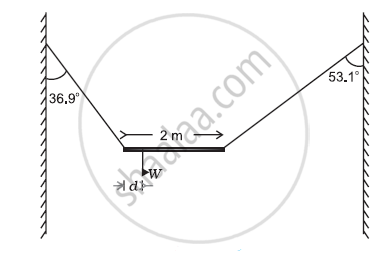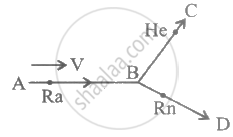Advertisements
Advertisements
प्रश्न
A sphere is rotating about a diameter.
विकल्प
The particles on the surface of the sphere do not have any linear acceleration.
The particles on the diameter mentioned above do not have any linear acceleration.
Different particles on the surface have different angular speeds.
All the particles on the surface have same linear speed.
उत्तर
The particles on the diameter mentioned above do not have any linear acceleration.
Explanation:-
Linear acceleration of a rotating particle is given as
\[\overrightarrow{a} = \overrightarrow{r} \times \overrightarrow{\alpha}\]
The sphere is rotating about a diameter; therefore, the position vector of the particles on the diameter is zero. Thus, linear acceleration of the particle is zero.
Explanation of other options:- All the particles of the body have the same angular velocity. All the particle on the surface have different linear speeds that depend on the position of the particle from the axis of rotation.
APPEARS IN
संबंधित प्रश्न
A non-uniform bar of weight W is suspended at rest by two strings of negligible weight as shown in the figure. The angles made by the strings with the vertical are 36.9° and 53.1° respectively. The bar is 2 m long. Calculate the distance d of the centre of gravity of the bar from its left end.

Two particles of equal masses have velocity `vecv_1 = 2hati` m/s and `vecv_2 = 2hatj` m/s. The first particle has an acceleration `veca_1 = (3hati + 3hatj)` m/s2 while the acceleration of the other particle is zero. The centre of mass of the two particles moves in a
Radium nucleus was moving with constant velocity v. It disintegrates into He and Rn. He and Rn move as shown in the figure. The CM of the system of He and Rn will move along ...A ... after the explosion of Ra. Here, A refers to:

